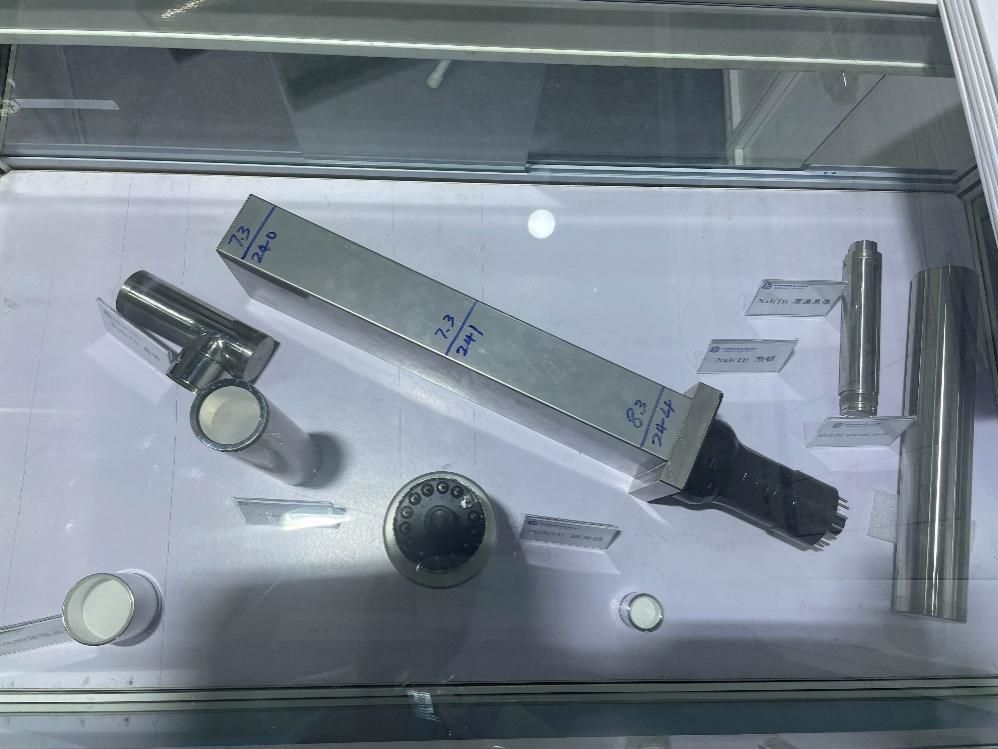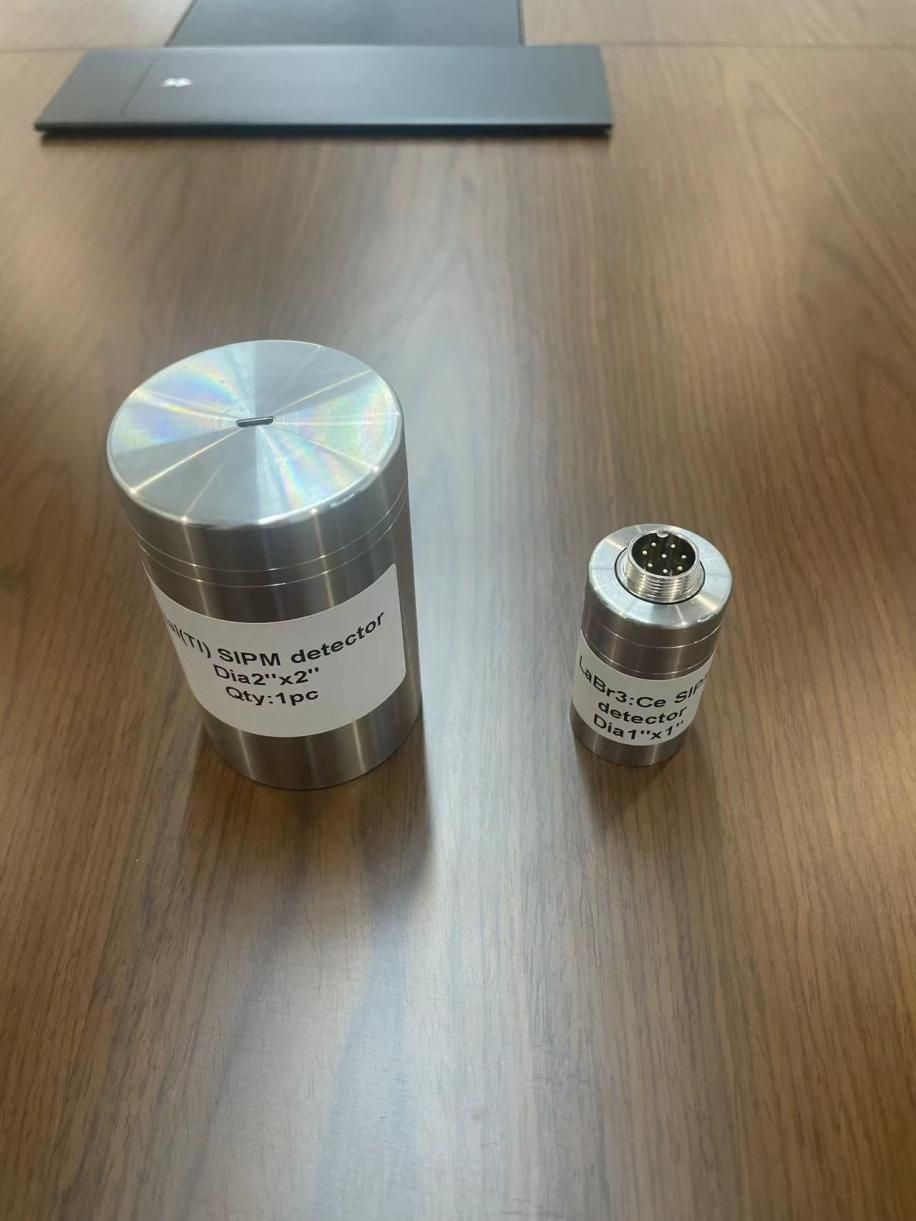Scintillation detectors are used for the determination of the high-energy part of the X-ray spectrum. In scintillation detectors the material of the detector is excited to luminescence (emission of visible or near-visible light photons) by the absorbed photons or particles. The number of photons produced is proportional to the energy of the absorbed primary photon. The light pulses are collected by a photo- cathode. Electrons, emitted from the photocathode, are accelerated by the applied high voltage and amplified at the dynodes of the attached photomultiplier. At the detector output an electric pulse proportional to the absorbed energy is produced. The average energy necessary to produce one electron at the photocathode is approximately 300 eV. For X-ray detectors, in most cases NaI or CsI crystals activated with thallium are used. These crystals offer a good transparency, high photon efficiency and can be produced in large sizes.
Scintillation detectors can detect a range of ionizing radiation, including alpha particles, beta particles, gamma rays and X-rays. A scintillator is designed to convert the energy of incident radiation into visible or ultraviolet light, which can be detected and measured by a sipm photodetector. Different scintillator materials are used for different types of radiation. For example, organic scintillator is commonly used to detect alpha and beta particles, while inorganic scintillator is commonly used to detect gamma rays and X-rays.
The choice of scintillator depends on factors such as the energy range of the radiation to be detected and the specific requirements of the application.
Post time: Oct-26-2023







